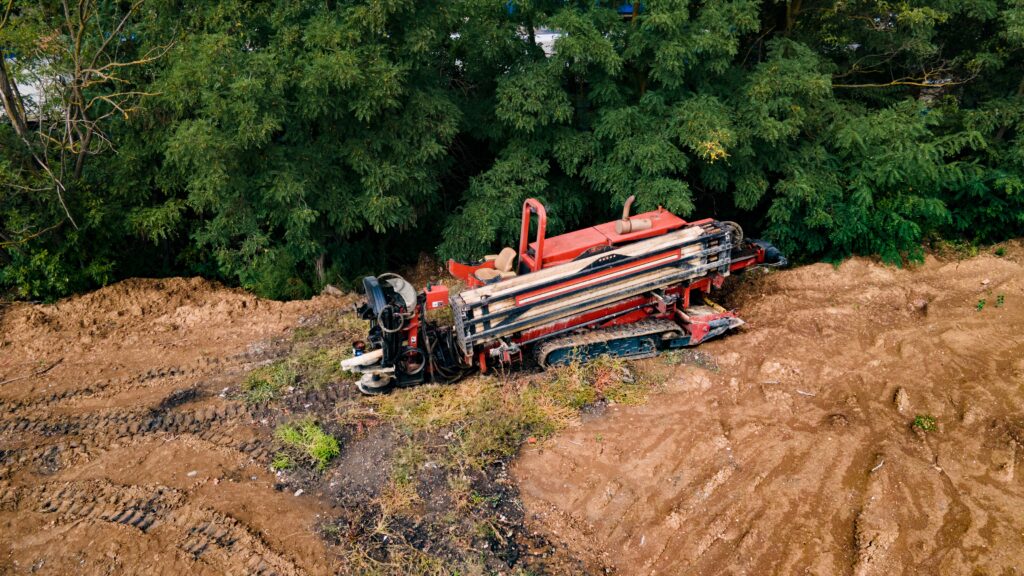
Oftentimes, a hydraulic barrier is the only thing standing in between migrating contamination and a residential neighborhood. In dire situations like this, there must be no gaps or breaks in the barrier. Horizontal wells maximize the chances of intercepting preferential pathways that groundwater flows through, providing the best defense against migrating contamination.
A hydraulic barrier involves creating a physical or hydraulic feature that alters the natural flow of groundwater to prevent the migration of contaminants into the subsurface. One of the primary methods of hydraulic control is using wells to create a groundwater gradient that redirects the flow through extraction or injection. When it comes to the implementation of a hydraulic barrier, one horizontal well can often outperform an entire line of vertical wells in groundwater recovery.
When a hydraulic barrier is proposed for a site, at least 5, 10, or more vertical wells would likely be required to accomplish the task. Even after installation, a line of vertical wells requires preferential communication to effectively prevent groundwater migration. Any variance of heterogeneity between the wells may cause a break in the barrier, allowing the groundwater and any associated contaminants to freely pass through the gaps.
One horizontal well, however, can replace an entire line of vertical extraction wells.
Since the screen is continuous along the length of one horizontal well, communication concerns between the screen and the surrounding medium are effectively eliminated. Compared to vertical, costs are reduced as less well materials are required and the thoroughness of the barrier is uncompromised.
Horizontal wells are significantly more geometrically compatible with target water-bearing zones. Rather than being perpendicular to the groundwater flow, they are parallel. Groundwater migration typically occurs within the specific subsurface zones that are more hydraulically conductive. The geologic formations responsible for increased conductivity are almost always more laterally extensive, with a limited vertical profile. It makes sense, then, to install a well that is geometrically compatible with the water-bearing zone. One horizontal well can achieve a radius of influence (ROI) of several tens of feet on average, so even if the vertical profile is extensive, horizontal wells are more than capable of encompassing the entire vertical extent of the target water-bearing zone.
With significantly more screen and precision installation into the target zones, horizontal wells provide more control over the groundwater flow in hydraulic barrier applications.
77 N. Plains Industrial Road
Wallingford, CT 06492
Over 5,000 Horizontal Remediation Wells Installed Worldwide
NAICS Codes: 237990 Heavy Equipment & Horizontal Drilling • 237110 Water & Sewer Line and Related • 541620 Environmental Consulting Services for HRW Screen Design • 237130 Underground Cable Lying & Utility Line Construction
Copyright 2025 Directional Technologies, Inc. All Rights Reserved.